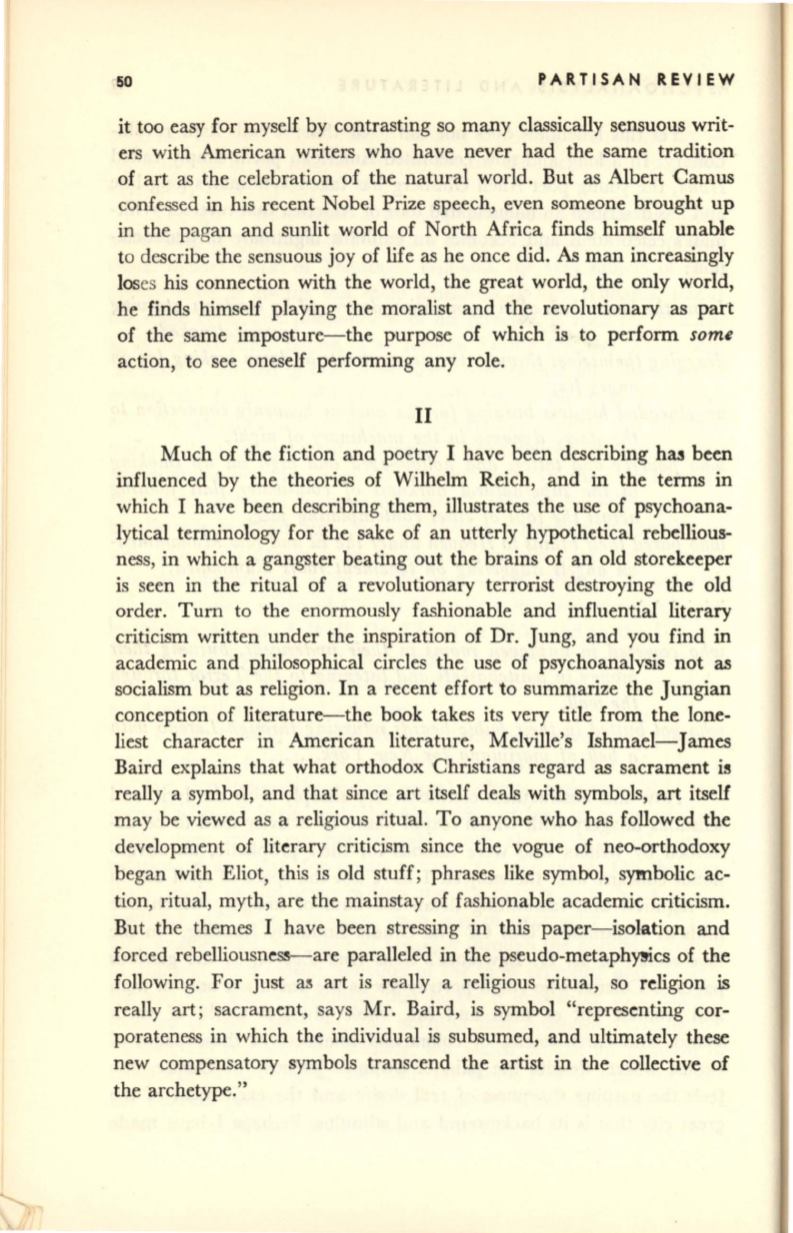
50
PARTISAN REVIEW
it too easy for myself by contrasting so many classically sensuous writ–
ers with American writers who have never had the same tradition
of art as the celebration of the natural world. But as Albert Camus
confessed in his recent Nobel Prize speech, even someone brought up
in the pagan and sunlit world of North Africa finds himself unable
to describe the sensuous joy of life as he once did.
As
man increasingly
loses his connection with the world, the great world, the only world,
he finds himself playing the moralist and the revolutionary as part
of the same imposture- the purpose of which is to perform
some
action, to see oneself performing any role.
II
Much of the fiction and poetry I have been describing ha.. been
influenced by the theories of Wilhelm Reich, and in the terms in
which I have been describing them, illustrates the use of psychoana–
lytical terminology for the sake of an utterly hypothetical rebellious–
ness, in which a gangster beating out the brains of an old storekeeper
is seen in the ritual of a revolutionary terrorist destroying the old
order. Turn to the enormously fashionable and influential literary
criticism written under the inspiration of Dr. Jung, and you find in
academic and philosophical circles the use of psychoanalysis not as
socialism but as religion. In a recent effort to summarize the Jungian
conception of literature-the book takes its very title from the lone–
liest character in American literature, Melville's Ishmael-James
Baird explains that what orthodox Christians regard as sacrament
i~
really a symbol, and that since art itself deals with symbols,
art
itself
may be viewed as a religious ritual. To anyone who has followed the
development of literary criticism since the vogue of neo-orthodoxy
began with Eliot, this is old stuff; phrases like symbol, symbolic ac–
tion, ritual, myth, are the mainstay of fashionable academic criticism.
But the themes I have been stressing in this paper-isolation and
forced rebelliousness-are paralleled in the
pseudo-metaph~cs
of the
following. For just as art is really a religious ritual, so religion is
really art; sacrament, says Mr. Baird, is symbol "representing cor–
porateness in which the individual is subsumed, and ultimately these
new compensatory symbols transcend the artist in the collective of
the archetype."


